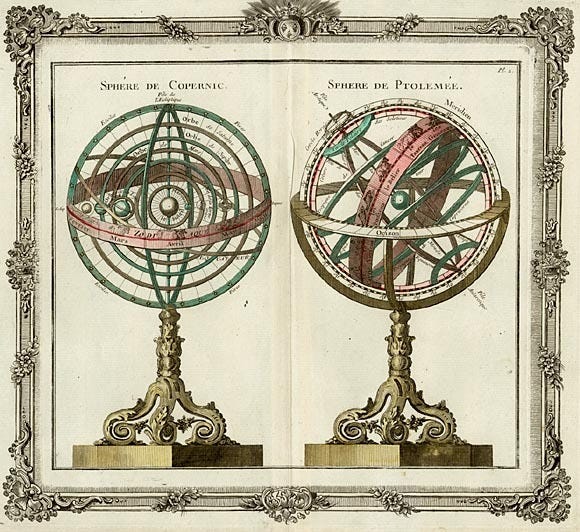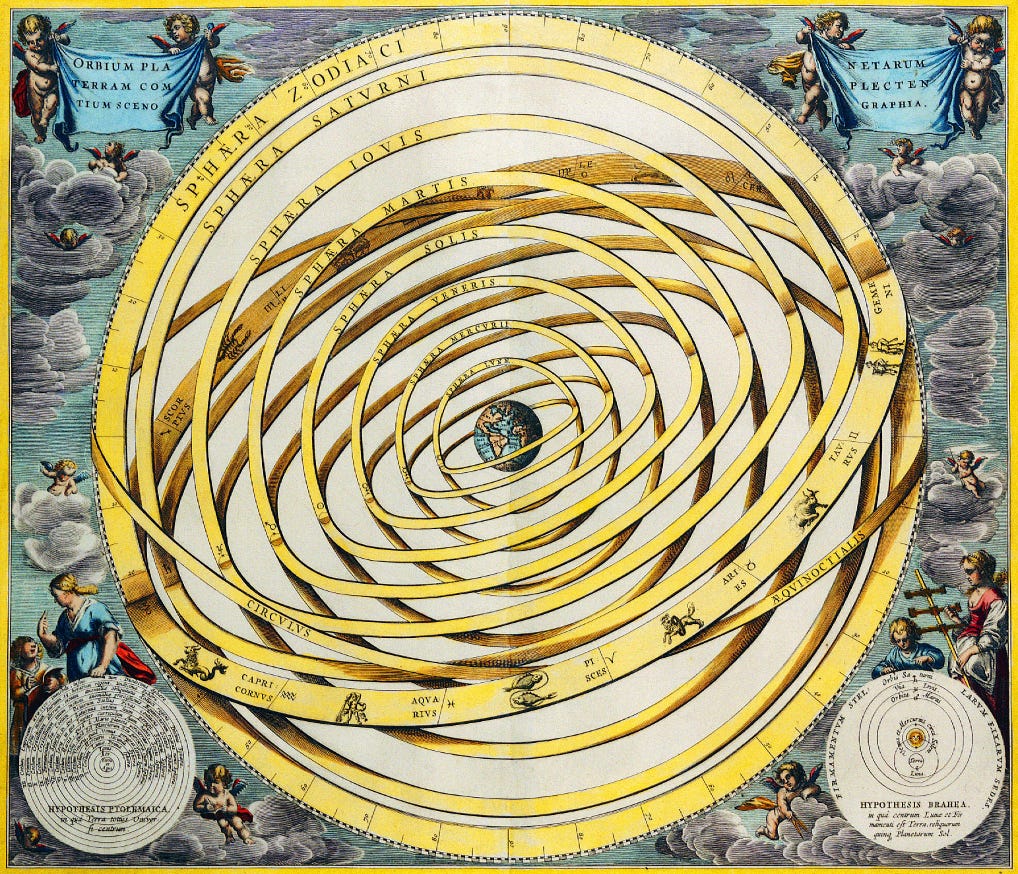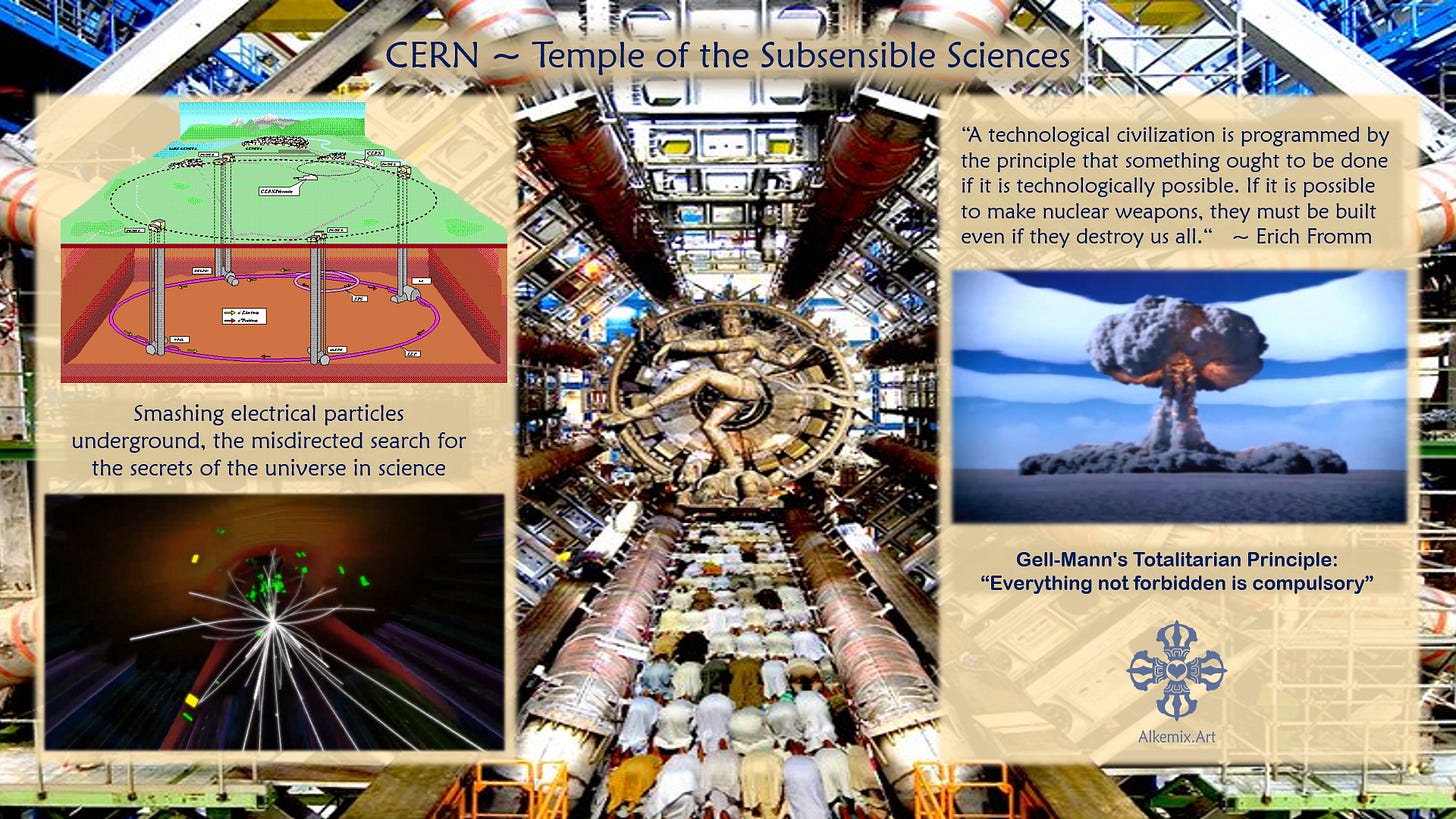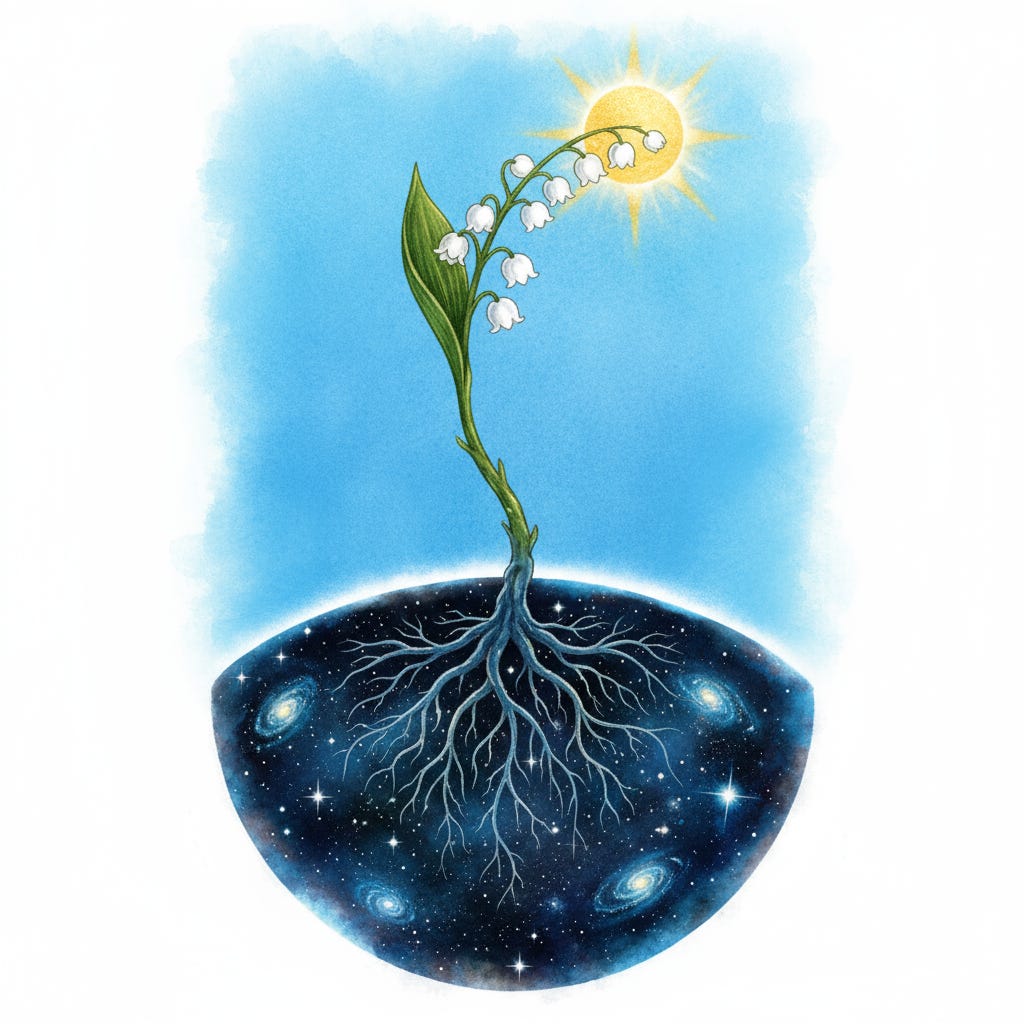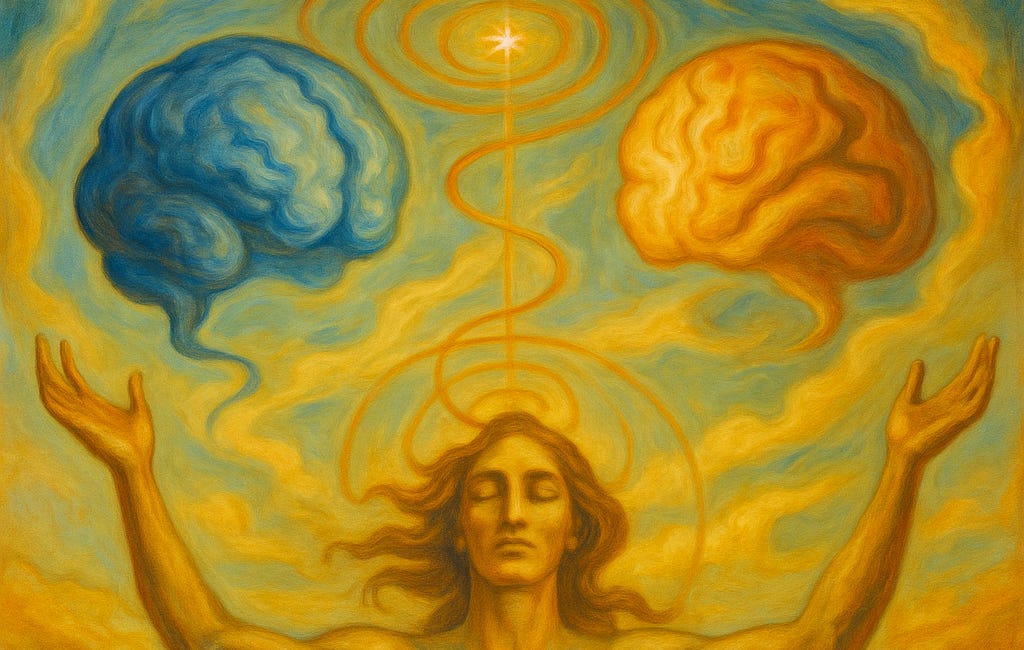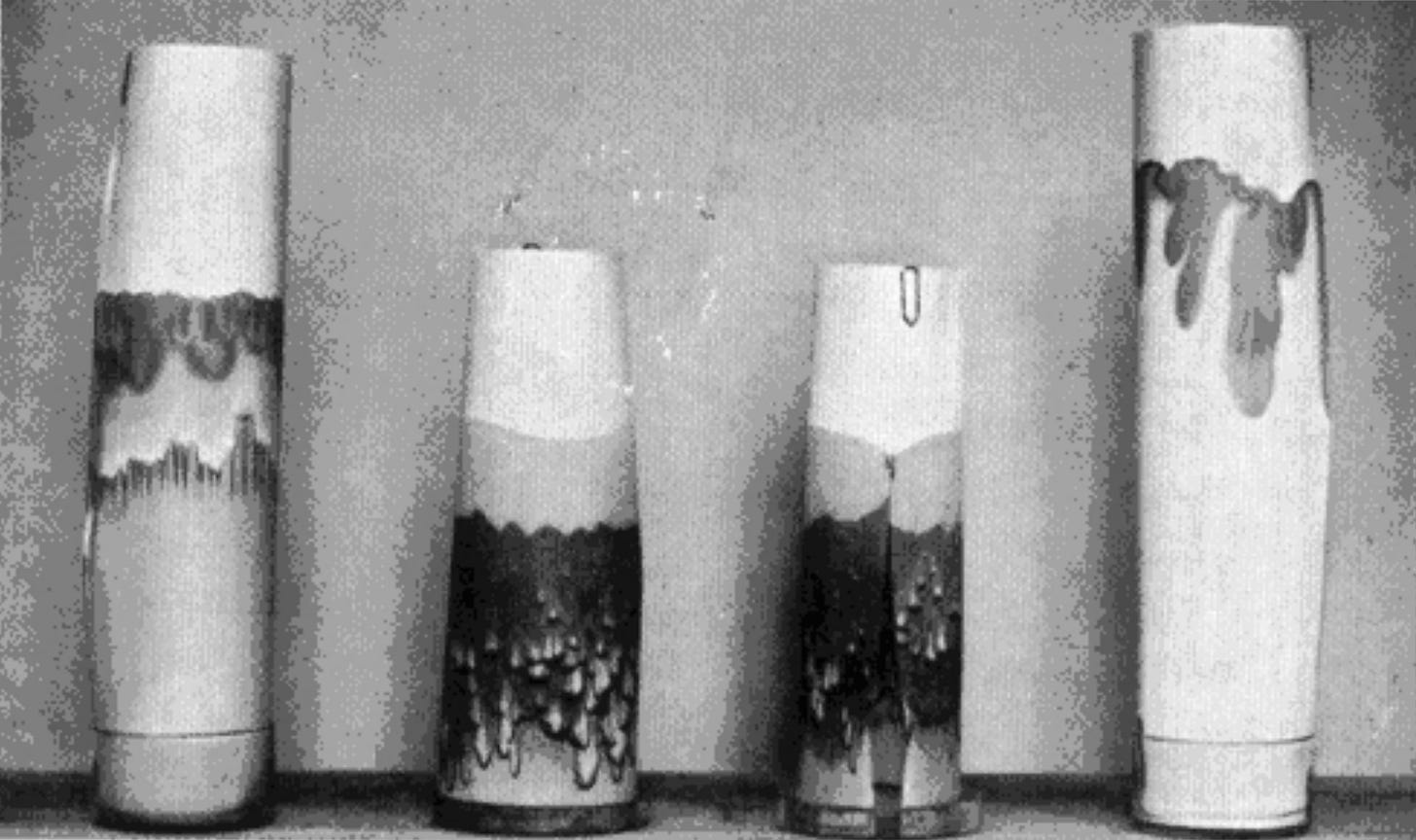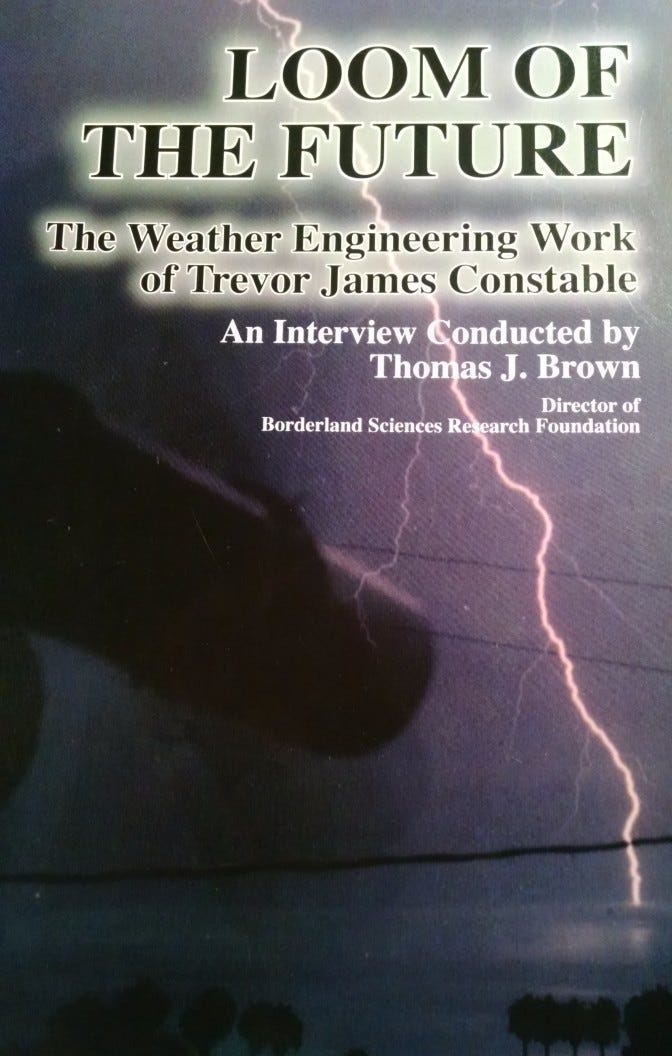If Newton Had Asked How the Apple Grew
The Lost Question of Science and the Forgotten Force of Levity
“In living nature nothing happens that is not in relation to the whole; each form is only a transformation of another.” —Johann Wolfgang von Goethe
The trajectory of modern science pivots on an unasked question. When Newton observed the apple descending in his family’s Lincolnshire orchard, his inquiry into its fall became emblematic of an age—setting the trajectory for all of mechanistic physics, where the downward pull of gravity defined both the scientific imagination and the architecture of natural law. The universe became machinery, governed by gravity’s pull, quantified through mathematics, stripped of the living principle. Yet the apple itself whispered a deeper riddle, one that science would spend three centuries refusing to hear: How did this fruit rise above Earth in the first place? What living force drew matter upward, organized its sweetness, and ripened it toward the sun?
This unasked question reflects something far more profound than mere scientific oversight, it marks the culmination of a vast metamorphosis in human consciousness itself. Rudolf Steiner identified this transformation as the passage into what he termed the Fifth Post-Atlantean Epoch. This is an age when humanity’s direct spiritual experience gave way to discursive, analytical thinking divorced from Nature’s formative principles. What Newton failed to ask was not simply a botanical inquiry but the very question that his epoch had rendered unthinkable: How does life ascend?
The Descent Beneath Matter—Consciousness Externalized
To understand Newton’s blindness, we must trace the arc of consciousness through what Steiner called humanity’s descent beneath matter. Before the 15th century, human consciousness experienced thinking as part of Nature herself, a participation in the cosmic intelligence that orders stars, seasons, and the growth of trees. Pre-Renaissance humanity possessed what we might call proprioceptive sensations of the soul’s innate structure, an immediate cognition of spiritual forces moving through the natural world.
But the Renaissance inaugurated a profound rupture. Thinking became separate from Nature, transformed into purely subjective experience, i.e., mind exiled from matter. This externalization marked the beginning of the age where humanity would descend into atomism, electrical thinking, and progressive disconnection from spiritual dimensions.
The Copernican Dislocation—From Cosmos to Universe
This transformation of consciousness found its cosmological mirror in Copernicus’s displacement of Earth from the center of creation. When heliocentrism replaced the ancient geocentric model, more changed than astronomical diagrams—humanity’s very relationship to the cosmos underwent metamorphosis.
In the earlier geocentric comprehension, Earth stood as the still center of a living cosmos, surrounded by the celestial spheres whose movements generated the Music of the Spheres. Human beings inhabited the moral and spiritual center of Divine Creation, participating directly in the cosmic harmonies. This was not a naïve anthropocentrism rather a participatory cosmology. Where humanity inhabited a universe structured around consciousness itself, serving as the meeting point of ascending matter and descending spirit.
The Copernican revolution shattered this reciprocity. Earth became merely one planet among many, spinning through dead empty space around an unremarkable star. The living cosmos, intimate and meaningful, transformed into an impersonal universe of blind mechanism. As Steiner observed, the Copernican age gave thought its mission to be an image of outer reality alone. The soul’s inner participation in cosmic intelligence was, for a time, set aside.
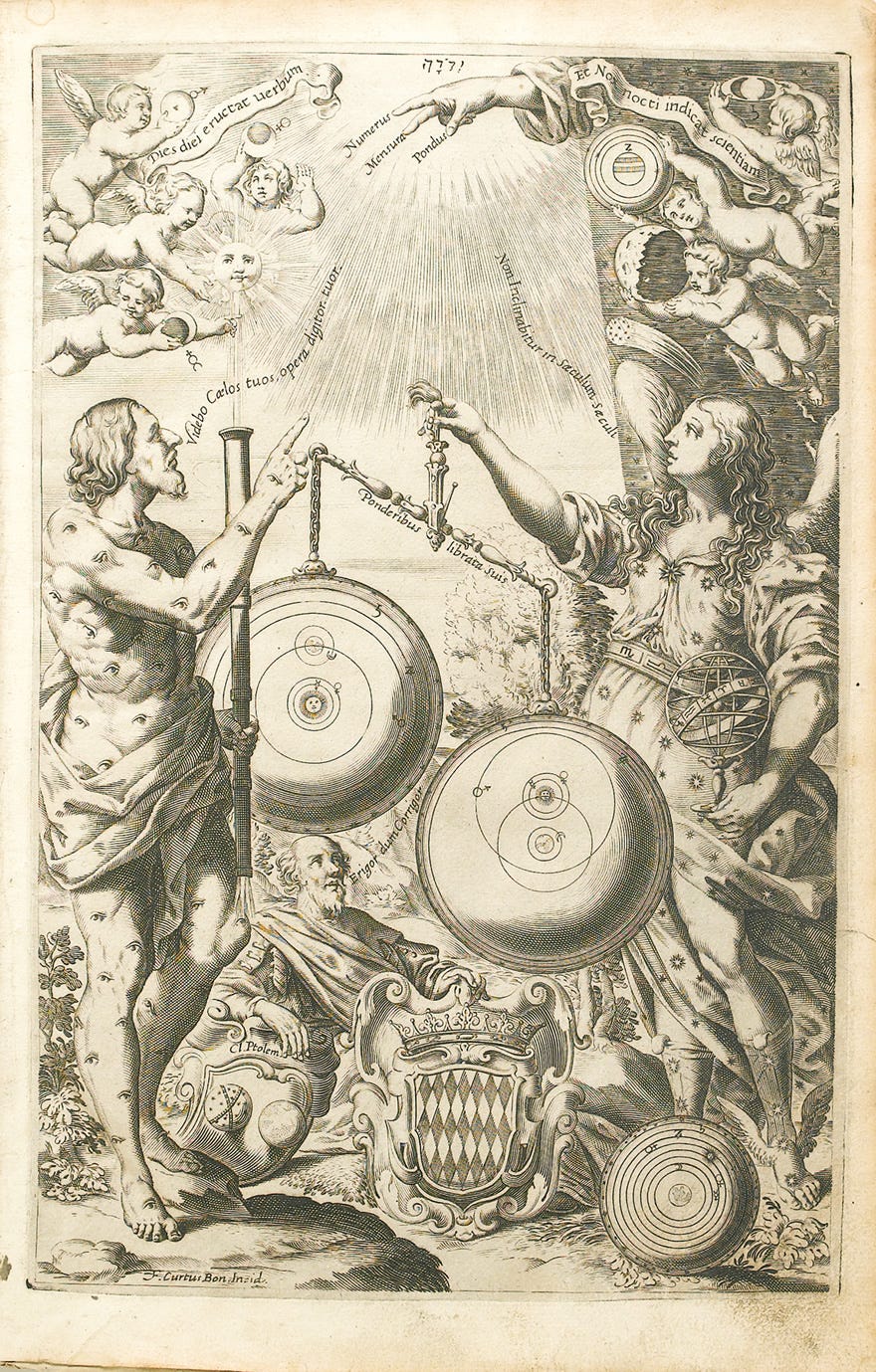
This was not merely a time of shift in astronomical models but transformation in human self-understanding. Where geocentric humanity perceived itself as embedded in living cosmos, heliocentric humanity found itself cast adrift in infinite void. The displacement from cosmic center paralleled the descent of consciousness beneath matter—both movements severing the felt participation in spiritual realities that earlier epochs had experienced directly.
Yet this withdrawal was not error, rather initiation. Through the exile of spirit from perception, the human soul learned to stand as an independent center of awareness. This was an emancipation necessary for freedom’s emergence within the cosmic order. Steiner recognized this dislocation as a requisite stage in humanity’s spiritual evolution: just as the individual ego must separate from maternal unity to achieve self-consciousness, so too had humanity as a whole to experience isolation from the living cosmos in order to awaken its capacity for inward-focused autonomy. The Copernican revolution fulfilled this necessity, giving thought the task of mirroring the outer world so that consciousness might discover its inner ground. In gaining the clarity of analytical precision, modern science also accepted exile from meaning. Yet within that very separation lies the preparation for a future reunion, when the soul, having won its independence, can reenter the cosmos not instinctively but in full, conscious participation.
The Exile of Levity
The stage for Newton’s orchard revelation had been prepared by this cosmological revolution and its philosophical consequences. In Florence, where Galileo’s disciples at the Accademia del Cimento codified his experimental spirit, essentially declaring that only what could be weighed and measured belonged to legitimate inquiry, consciousness completed its descent beneath matter. This implicit Contra Levitatem maxim, literally “against levity,” excised the upward, formative, life-bearing dimension of reality from scientific consideration.
Mathematics was enthroned as Nature’s sole language, and Galileo’s parabolic calculations of projectile motion became the template for all subsequent investigation. Where earlier epochs had studied Nature through participatory cognition—the Egyptian priest-astronomers aligned their temples and rituals with the rhythms of the Neters - cosmic principles embodied in stars and celestial cycles; the Babylonian scribes recorded the heavens, deciphering patterns guiding time, kingship, and fate; the Greek philosophers seeking ideal forms shining through the flux of phenomena—the new science insisted on detachment, quantification, and the reduction of quality to quantity, banishing the sacred dimension in pursuit of pure measurement.
Galileo’s intellectual fortress became the modern laboratory: a place of controlled detachment, no participatory knowing. His cannon trajectories became the prototype for all natural law. The cannonball replaced the growing seed as science’s exemplar. From those tables plotting angles and velocities emerged inertialistic physics. The result a worldview where every phenomenon is understood as trajectory, descent, weight. This lineage continues unbroken: the cannonball metamorphosed into the satellite, the missile, the accelerated particle. At CERN we witness the latest iteration—matter smashed at relativistic speeds, seeking ultimate truth in the debris of collision rather than in the breath of creation.
Goethe would later protest this mathematization of Nature: “Mathematics has the completely false reputation of yielding infallible conclusions”. For him, mathematical description captured only the shadows of phenomena, never their living light. Goethe represented an alternative possibility, the path not taken, where observation can be trained to perceive formative gestures directly, where science can remain anchored in the irreducible wholeness of living Nature.
“Mathematics has the completely false reputation of yielding infallible conclusions. Its infallibility is nothing but identity. Two times two is four, but it is just two times two, and that is what we call four for short. But four is nothing new at all.” —Johann Wolfgang von Goethe, Maxims and Reflections
Newton’s Missed Polarity—Descent Without Ascent
When Newton formalized universal gravitation, he merely refined and universalized Galileo’s line of descent. He quantified gravity with elegant precision but never questioned the counter-force that raised the tree, elaborated its branches according to lawful metamorphosis, and filled the fruit with substance. Had he begun his inquiry with growth instead of gravity, had he asked how the apple ascended through its seasons of becoming, he would have discovered levity—the upward-striving principle that mirrors gravity’s condensing pull.
This blindness was not personal failure, rather epochal necessity. The Fifth Post-Atlantean age required humanity to experience matter as dead, inert, governed solely by mechanical forces. Only by forgetting the formative ethers, by denying levity’s reality, could consciousness achieve the separation needed for individualization. Newton’s apple had to fall—could only fall—in an age when consciousness itself was descending into matter’s depths, when the Copernican revolution had already displaced humanity from participatory relationship with cosmic forces.
Yet Goethe perceived what Newton could not. In every plant, Goethe saw a fundamental polarity: root penetrating downward into darkness, blossom reaching upward toward light. Gravity draws matter inward, mineralizing and condensing; levity organizes it outward, etherealizing and forming. Life exists in the rhythmic tension between these two cosmic breaths—the systole and diastole of creation itself.
Seeing the Whole of the Plant
“Nature is, after all, the only book that offers important content on every page.”
The Four Ethers—The Formative Architecture of Life
Having traced the descent of thought beneath matter through Copernicus, Galileo, Descartes, and Kant, we now turn from the philosophical to the morphological. We travel from the abstraction of Cartesian dualism to the living dynamics that Rudolf Steiner revealed in his spiritual-scientific investigations. These are the very forces ignored or rendered invisible when gravity was enthroned as Nature’s sole governor and levity was systematically expelled from legitimate inquiry. Steiner named this countervailing current explicitly, identifying not one but four distinct etheric forces that mediate between the physical and spiritual worlds: where gravity pulls toward mass and density, these ethers work to build form, maintain circulation, and generate the ascending patterns we observe throughout Nature. Together, these Four Ethers constitute a complete cosmology—each evolving from the previous, each inscribing its signature geometry into living and cosmic substance, each answering gravity’s condensing pull with levity’s formative lift.
The Warmth Ether stands as the most primordial, the formative ground from which the others evolved. Bridging elemental fire and etheric realms, it governs expansion, the inner experience of vitality, and the impulse that creates spherical forms. It is the most material of the ethers, the one we can approach through physical measurement of heat, yet it already transcends mere mechanism by organizing thermal dynamics into life-sustaining patterns. Warmth Ether operates radially—expanding centrifugally outward, generating the spherical geometries we see in cells, embryos, and planetary bodies.
The Light Ether, evolved from Warmth, creates space through delineation and polarity. Working between light and darkness, it generates the spatial architecture that allows form to manifest, characterized by linearity, attraction, and triangular geometries. Light Ether induces triangular forms in substance and works expansively alongside Warmth Ether—both belonging to the centrifugal, radiating class of etheric forces. This is the ether of spatial differentiation, enabling the very possibility of shape emerging from formlessness. It weaves the plant world into being, drawing the floral kingdom upward contra gravity through its “upright force”.
The Tone or Chemical Ether, evolved from Light Ether, separates and reconnects through what ancient traditions recognized as the Harmony of the Spheres. Where the first two ethers expand outward, Chemical Ether works suctionally—drawing inward through centripetal, contractive force. It creates characteristic half-moon and logarithmic spiral forms, the geometry of concentration and harmonic proportion. It works through the same mathematical relationships that govern both musical intervals and chemical affinities. As Steiner noted, what we call chemical action is projected into the physical world from the realm of Devachan, the spiritual world where the Harmony of the Spheres resounds. The numerical ratios in chemistry express the numerical ratios of this cosmic harmony, which has become silent through matter’s densification. This ether harmonizes and structures the development of phenomena, binding biological force into coherent patterns.
The Life Ether, most evolved of the four, maintains continuity, memory, and the capacity for growth itself. Working suctionally alongside Chemical Ether, it unifies an object with its environment, creating the square and rectilinear forms characteristic of crystalline and organic structure. It is the principle of organic coherence, the force that enables an organism to remain itself through metamorphosis, to remember its form while transforming. Life Ether preserves integrity—not through rigidity but through the capacity to maintain wholeness even as parts change.
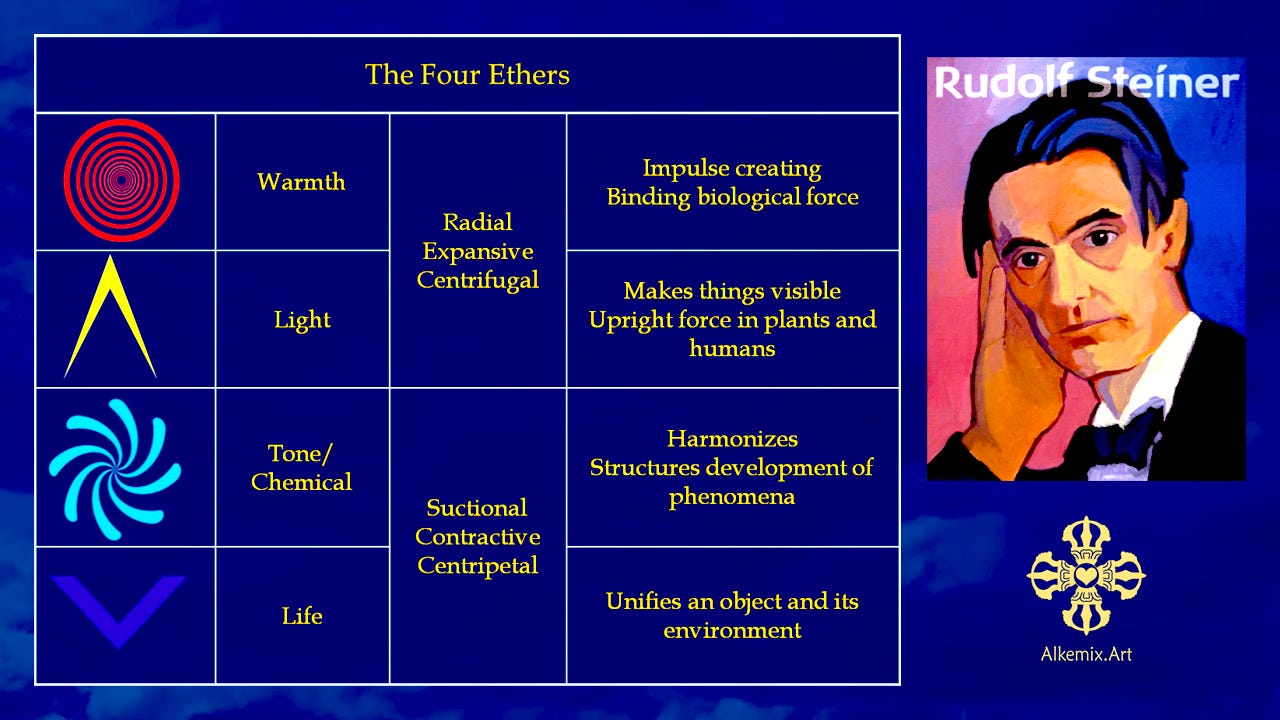
Together, these Four Ethers constitute the actual formative forces governing living systems—a layered architecture invisible to instruments designed only to measure weight and inertia. The first pair, Warmth and Light, radiate centrifugally, creating expansion and spatial form; the second pair, Chemical and Life, work centripetally, drawing inward to concentrate substance and maintain organic memory. Each successive ether contains the qualities of the previous ones while adding new attributes; their interplay and metamorphosis stand behind all phenomena of the physical world, even though they themselves remain supersensible creative forces. They represent what Newton’s science systematically excluded: the upward, organizing, life-bearing currents that answer gravity’s pull with levity’s lift.
The Inertialistic Lineage—From Galileo’s Guns to Einstein’s Void
Giovanni Alfonso Borelli—student of Galileo’s disciples and one of the founding members of the Accademia del Cimento—extended the mechanistic impulse into biology itself, reducing animal motion to leverage and hydraulics. In his masterwork De Motu Animalium, Borelli analyzed the structure, motion, balance, and forces of nearly all principal joints in the human body, applying the rigorous mathematical methods Galileo had developed for physics to the realm of living organisms. This implicit contra spiritus dictum declared that animal motions are purely mechanical—as are those of the planets and all else observable in the universe. For Borelli, living bodies were machines, assemblages of smaller component machines, and these of still smaller ones. Muscle contraction, cardiac function, blood circulation, respiration—all could be explained through geometry, leverage, and hydraulic principles without recourse to vital forces or animating spirits. Biology became biomechanics; the organism became apparatus.
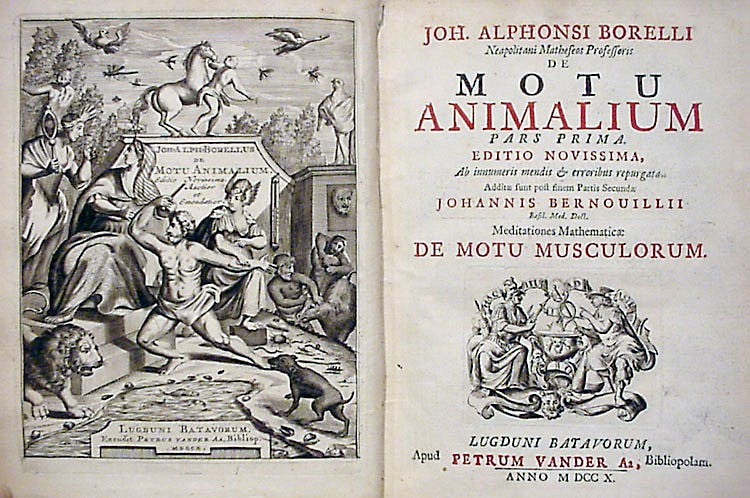
René Descartes completed the philosophical exile that Galileo and Borelli had enacted in physics and biology. Through his radical dualism of res cogitans (thinking substance) and res extensa (extended substance), Descartes severed mind from matter with surgical precision, establishing the conceptual foundation for a soulless universe. Matter became pure mechanism, governed entirely by contact forces and mathematical laws; spirit retreated into the isolated interiority of consciousness, exiled from participation in the material world. This Cartesian split rendered Nature utterly dead, nothing more than a clockwork automaton devoid of interiority, purpose, or qualitative experience. The cosmos that had once breathed with living intelligence became mere extension in space, quantifiable and manipulable but fundamentally meaningless. Through Galileo, Borelli, and Descartes, levity was denied citizenship in the cosmos, the ethers were systematically erased from legitimate inquiry, and the stage was set for Newton’s universal mechanics to reign unchallenged for three centuries.
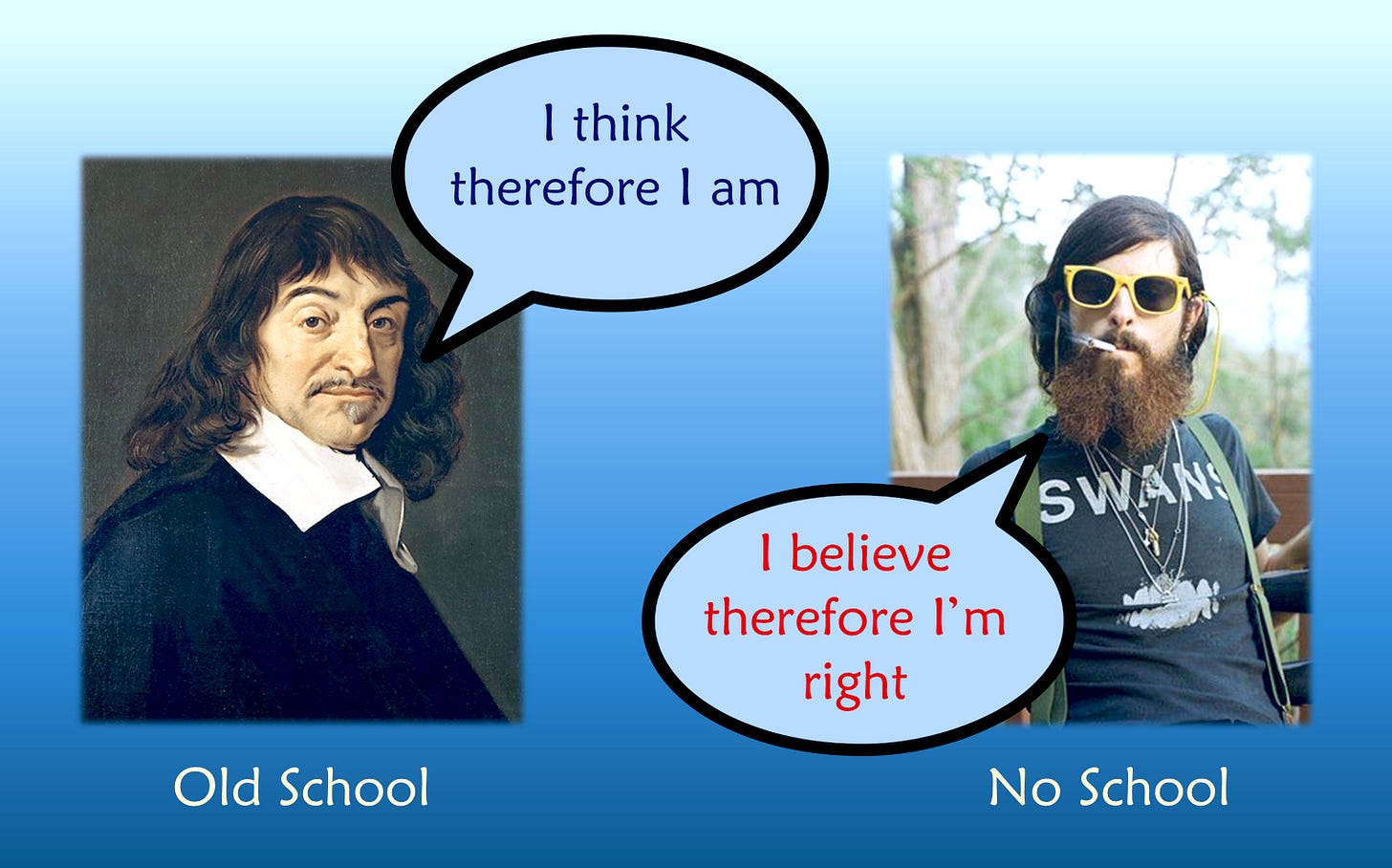
If Descartes exiled soul from substance, Immanuel Kant completed the exile by constructing the architecture of its confinement. In the Critique of Pure Reason, spirit no longer perished in matter but was enclosed within its own categories—imprisoned in a hall of mirrors where consciousness could know only its reflections, never the thing itself. The noumenon, reality as it exists in itself, was declared forever beyond reach; only phenomena, appearances filtered through the intellect’s structuring categories, remained accessible to reason. In this elegant yet confining synthesis, Kant rationalized the world’s disenchantment: mind attained dominion over its representations while being divorced utterly from direct participation in being. The cosmos could be measured, represented, and conceptualized, but never again known in the living sense. Reality itself became an asymptote, approached infinitely but never touched. Thus Kant preserved the dignity of reason but at the cost of its communion with the world, raising an invisible wall between thinking and being that completed the descent Galileo had begun. The cosmos was secured as phenomenon, yet life’s participation in it was banished until a new kind of knowing arose in Goethe, who sought not to measure Nature from without but to behold her inwardly, dissolving the very wall that Kant had raised.
This philosophical trajectory mirrors perfectly the consciousness transformation Steiner described. As human beings descended into left-brain analytical processes, as discursive consciousness replaced direct spiritual cognition, the universe itself appeared increasingly mechanized, atomized, stripped of interiority. What earlier ages experienced as living cosmos became, in the Fifth Epoch, a clockwork of blind forces—the Copernican dislocation complete.
Exploring right brain — left brain consciousness:
Consciousness, Culture, and Cardiognosis
The human soul stands at a threshold, its divided nature etched into the very fabric of our being—a division not merely anatomical but existential, reverberating through history, culture, and the structures we inhabit.
This descent, both literal and philosophical, finds its contemporary apotheosis in the concept of the black hole: a mathematical tomb where even light supposedly perishes, where matter collapses into infinite density. Yet as plasma cosmology has demonstrated, there are no black holes in the living universe, only active plasmoids, radiant vortices sustaining the circulation of galaxies through electromagnetic currents and toroidal flow. The heart of creation is not collapse but circulation, not death but perpetual metamorphosis.
Tesla understood this intuitively, he sensed that space itself was not a void. For him, “space cannot be curved”—the universe is not a fabric to be bent by mass but a living continuum, an etheric field of circulation and resonance. He worked directly with this medium, developing systems of power transmission that would have embodied the principle of participation rather than extraction, resonance rather than combustion. Had his non-EM magneto-dielectric Worldwide Wireless system come to fruition, it would have demonstrated what Steiner articulated theoretically: that the ethers are as real as matter, and that engineering aligned with these formative forces yields bioharmonious results.
“I hold that space cannot be curved, for the simple reason that it can have no properties. It might as well be said that God has properties. He has not, but only attributes and these are of our own making. Of properties we can only speak when dealing with matter filling the space. To say that in the presence of large bodies space becomes curved is equivalent to stating that something can act upon nothing. I, for one, refuse to subscribe to such a view.” ― Nikola Tesla, “Pioneer Radio Engineer Gives Views On Power.” New York Herald Tribune, September 11, 1932.
Goethean Science: The Path of Exact Sensorial Imagination
Yet Steiner’s vision extended beyond diagnosis of decline. The Fifth Epoch’s externalization was necessary for consciousness evolution and the development of modern science—but it also creates potential for spiritual alienation and materialism. The question is whether humanity can now metamorphose forward, re-integrating subjective experiences and spiritual awareness into science and culture through what Goethe pioneered.
“The human being knows himself only insofar as he knows the world; he perceives the world only in himself, and himself only in the world. Every new object, clearly seen, opens up a new organ of perception in us” —Johann Wolfgang von Goethe
Goethe’s approach stands as the antithesis to Galileo’s mechanistic reduction. Where conventional science seeks to explain phenomena through abstract theories imposed from without, Goethean science seeks an alternative to explanation itself—a way of seeing where the parts and the wholeness are simultaneously present together. This requires what Goethe termed exact sensorial imagination, exakte sinnliche Phantasie.
The Goethean approach unfolds through distinct stages, each deepening participation with the phenomenon:
Exact sense perception begins the journey: detailed observation of the parts through the full range of senses, suspending judgment and preconceptions in an open, listening mood of wonder. One views the phenomenon as if for the first time, allowing it to speak on its own terms.
Exact sensorial imagination then brings these observations together inwardly, making fluid what appeared static. One visualizes the “coming into being” of the organism, following its shapes, colors, and gestures as they transform through time. This is not arbitrary fantasy but precise picture-building, sculpting the phenomenon in consciousness while maintaining fidelity to what was actually perceived.
Through this work, one encounters the irreducible wholeness, not as abstract concept but as living gesture. Active perception stills into receptive attentiveness, allowing the phenomenon to reveal something of its essential nature. The dynamic quality of transformation deepens to reveal what Goethe termed the “archetypal phenomenon” or Urphänomen, the formative principle working through all variations.
Finally, one becomes utterly identical with the phenomenon through what Goethe called “delicate empiricism”, zarte Empirie, his participatory phenomenology of Nature. Through intuitive perception one merges with the organism, recognizing its archetype not as external classification but as inward comprehension. This represents true theory, not abstract speculation but beholding, visualizing with the mind’s eye the living idea working through natural forms.
This cognitive picture-building in self-developed new organs of consciousness serves as the counter-pole to theory-building in traditional science. Both require intense inward activity, but the creation of an inner picture of the phenomenon’s true living processes keeps us close to phenomena, closing gaps through disciplined perception rather than imposed abstraction. It prevents the “fallacy of misplaced concreteness” where theories take on independent life and we see only the theory in things rather than the things themselves.
This methodology offers what the Copernican revolution cost: restoration of participatory relationship with Nature without regression to pre-modern consciousness. Where heliocentrism displaced humanity from cosmic center, Goethean science relocates the observing consciousness as active participant in Nature’s revealing—not through anthropocentric projection but through disciplined development of perception itself.
“Goethe believed that the true Theory is contained in the Phenomenon. The phenomena our senses see do not deceive us; they are not unlike the ideal reality which brings them forth. As the Greek origin of the word implies, the Theory is the true seeing of the thing—the insight that should come with healthy sight. Yet man is so constituted that he does not really see unless he meets what he sees with spiritual activity on his own part.” —George Adams & Olive Whicher, The Living Plant, Goethean Science Foundation, 1949
Lili Kolisko and the Contra-Gravity Currents
Lili Kolisko’s revolutionary metal-planet crystallization experiments of the 1920s-1960s demonstrated what Galileo’s lineage excluded from investigation. Working with the inspiration of Rudolf Steiner, she showed that substances in liquid state become receptive to planetary and cosmic influences—the contra-gravity motion upward into the downpouring cosmic forces. Her chromatograms, metallic salts in solution crystallized at specific times, revealed patterns invisible to mechanistic analysis: the living relationship between metals and planets, between terrestrial substances and celestial rhythms.
For further exploration of Kolisko’s cosmic crystallization work:
As Steiner noted: “So long as substances are in a solid state they are subject to the forces of the earth, but as soon as they enter the liquid state, planetary forces come into play”. This insight represents a complete inversion of Newton’s gravitational worldview. It suggests that matter is not simply pulled downward by Earth’s mass but participates in a cosmic circulation—a breathing in and out of terrestrial and celestial forces mediated by the four ethers.
Kolisko’s work thus restored experimentally what the Copernican revolution had severed conceptually: the living connection between earthly substance and cosmic forces. But unlike pre-Copernican cosmology’s participatory mysticism, her methodology employed Fifth Epoch rigor, i.e., precise procedure, reproducible experimentation, and disciplined observation.
The Kolisko Method of Crystallization
Capillary Dynamolysis ~ Steigbild
An aqueous solution of one or more metallic salts is placed in a shallow glass vessel in which is positioned a vertical cylinder, ~30cm high, of filter paper - rounded and closed upon itself
The solution is allowed to rise up the filter paper until it is all absorbed and dries.
This forms a crystallized image, a chromatogram
This contra-gravity motion upward into the downpouring cosmic influences thus reveals the workings of the etheric forces into earthly substance when in a fluid state
The Science We Lost—Geometry Over Mechanism
Trevor James Constable, that towering intellect and practical etheric engineer, demonstrated precisely what inertialistic science excluded. Through decades of atmospheric work at sea aboard the S.S. Maui and in field operations across continents, Constable showed that geometric forms, properly constructed and oriented, can interact with etheric currents to produce measurable meteorological effects. His weather engineering was not mechanics but morphology. Trevor worked with the living geometry that organizes water vapor, atmospheric pressure, and precipitation patterns through the Chemical Ether.
Loom of the Future free pdf download: https://alkemix.gumroad.com/
Constable’s biogeometric forms worked specifically with the Tone/Chemical Ether, that force which separates and recombines, creating unified wholes through proportions and harmonic relationships. He equated this experimentally with Wilhelm Reich’s orgone energy.
Trevor’s cloudbuster devices and etheric rain engineering systems employed precise geometric ratios that resonated with the Harmony of the Spheres, the spiritual reality underlying material chemistry. This was not superstition, rather a sophisticated application of principles that Steiner had articulated theoretically: that chemical affinity in the physical world reflects tonal relationships in the spiritual world.
“This isn’t magic or mysticism, it’s simply engineering.” —Trevor James Constable
Engineering the Ethers
“I have been able to present this work because I am for Life and Love, and reached out into the cosmos with that in mind and heart. I expected to find the pulse of life—and I did. So will all others who do likewise.” —Trevor James Constable
This represents the kind of science we lost when the Contra Levitatem maxim was established and the Copernican revolution severed humanity’s participatory bond with cosmic forces. A science that studies the becoming of forms rather than merely their motion. One that perceives the etheric dynamics weaving galaxies into living unities rather than reducing them to gravitational accidents. Constable’s motto “Only results count” echoes the pragmatic empiricism that should have guided scientific development: what works reveals what is real, the theory is contained in the phenomenon.
From Galileo’s cannonballs through Newton’s falling apple to Einstein’s curved void and the particle collisions at CERN, the same reductive impulse has dominated: Contra Levitatem—against the upward, against life, against the formative principle. It is the worldview of descent, of dominion, of analysis that murders to dissect. A science that measures everything but comprehends nothing of the living processes it claims to explain.
Had the Accademia del Cimento weighed the etheric breath as carefully as the ponderable stone, had Galileo sought form alongside fall, had Copernicus’s heliocentric insight been integrated with rather than replacing participatory cosmology, then science today would resemble Goethe’s morphology of light rather than the physics of darkness. We would possess a technology of resonance rather than combustion, of enhancement rather than extraction.
The Apple’s True Cycle—Breathing Earth
This is precisely the science the apple requires. Not equations of descent but perception of the formative gestures that build tissue, concentrate sugars, and ripen toward harvest through the orchestrated activity of all four ethers. The apple does not fall per se, it completes a breathing cycle of Earth. It rises through spring’s expansion carried by the Life Ether’s growth principle, ripens in summer’s warmth through the Warmth Ether’s vitalizing force, develops form through the Light Ether’s spatial organization, and concentrates sweetness through the Chemical Ether’s harmonic proportioning.
To ask how the apple grew is to restore wonder to reason, life to law. It is to recognize that space and time are not curved abstractions but living media structured by etheric forces, that the cosmos flowers rather than collapses, that every act of perception can participate in the great Path of Knowledge when new organs of cognition have been developed. This participatory science reconnects material investigation with formative cognition, bridging the chasm that opened in the Renaissance when the Copernican revolution displaced humanity from cosmic intimacy, and consciousness descended beneath matter.
Alchemy’s Return—The Primality of Spirit
What Steiner articulated represents a return to what ancient traditions knew but expressed mythologically rather than conceptually: alchemy as the last fruit of a glorious past, from when humanity lived in consciousness at one with the spiritual forces in Nature. We reconnect with these spiritual forces through the conscious effort of cognizing natural processes and engaging in concomitant inner development.
Steiner called this spiritual-scientific consciousness—direct cognition of the spiritual in the natural world. It is not regression to pre-Renaissance participation mysticism or pre-Copernican geocentrism, but evolutionary advance: the marriage of Fifth Epoch analytical precision with renewed clairvoyant capacity, creating an uplifting spiritual-scientific self-initiating process involving Imagination, Inspiration, and Intuition. These represent stages of conscious clairvoyance built upon modern methodology’s rigor, not its abandonment.
As Steiner observed regarding the Copernican revolution itself, the age of natural sciences must now bring forth those soul forces that let the soul behold itself and the spiritual-mental nature of the universe. The thought that served to image outer reality must now prepare the soul, bringing up inner hidden forces from the depths by which consciousness can perceive what forms the basis of both ancient participatory wisdom and modern analytical precision.
This inner development leads to metamorphosis from external focus to internal focus, where faith transforms into knowledge and clairvoyance into intellectual capacity. This is the spiritual alchemy of our age. Following the Goethean approach integral to this transformation we bridge the gap between matter and spirit, fostering intuitive comprehension of the natural world through disciplined perception rather than abstract theory. It makes the scientist not merely an observer but a conscious participant in Nature’s becoming, one who cognizes formative forces through their highly developed imaginative picture-building processes.
As Steiner explained of our current age:
“We must not be misled when we meet people who have not advanced by means of intellectual comprehension, but have certain psychic abilities that seem to appear spontaneously. Based on our comprehension of the mission of spiritual science, we know that souls can now think only because the clairvoyance of an earlier age has been suppressed. People with natural clairvoyance, which was not acquired through inner effort, must be seen as persons who have remained at an earlier evolutionary stage and who should therefore receive special care in our Society, rather than be considered particularly advanced. It would be an incorrect judgment if we were to consider such souls particularly mature, as having experienced particularly high incarnations. People with a natural gift of clairvoyance have gone through far less than those who are thinkers nowadays.” —Rudolf Steiner
The Sixth Cultural Epoch—Science as Temple Practice
Steiner was explicit about the trajectory ahead. Within his framework, the transitional period from the Fifth to the Sixth Cultural Epoch is not merely an evolutionary progression of consciousness but also a profound spiritual trial. Those human beings able to imbue supersensible knowledge with robust intellect and feeling during this period, according to Steiner, will be equipped to meet the transformed conditions of a future Earth. Yet, while his epochal vision points to an inward metamorphosis, current empirical indicators, including the unfolding magnetic excursion, send a sobering reminder that Earth’s transitions are not always gradual or gentle. Throughout geological history, the shift between epochs has frequently involved catastrophic resets such as magnetic pole reversals, crustal displacement, and biospheric cleansing events that radically alter civilization’s continuity.
For this reason, the leap into the Sixth Epoch cannot be conceived as an abstract spiritual developmental ideal alone, but must also reckon with the stark possibility of a world reshaped physically and ecologically by cataclysm. The call for a re-integration of subjective experience and spiritual awareness into science, as embodied in the Goethean approach, thus acquires a renewed urgency. Humanity faces the imperative to move beyond reductionist, exploitative science toward participatory cognition and technologies aligned with formative, etheric forces, not only for spiritual advancement but for practical survival through cycles of planetary upheaval.
In concrete terms, this means developing sciences that can apprehend formative and etheric realities directly, creating technologies that resonate with rather than dominate the forces shaping life, and building systems of spiritual and ecological resilience. Medicine must address not only the molecular but also the astral and etheric dimensions of health. Agriculture must move in rhythm with planetary and cosmic dynamics, as in Steiner’s biodynamics, blending intuition, observation, and etheric sensitivity into every act of cultivation.
Whether the Sixth cultural epoch unfolds gradually through the coming millennia as Steiner outlined, or arrives abruptly through catastrophic transition, the inner work remains identical. It will be marked by the conscious transformation of the astral body through egoic work—where, amid or after profound material trials, spiritual community, intuitive knowing, and supersensible science become as critical as technological adaptation. In that epoch, the sciences of life will be less about mastering external nature and more about partnering with the evolving Earth herself. In this view, human preparation for the next epoch is not merely esoteric duty but existential necessity.
In his landmark 1962 work The Structure of Scientific Revolutions, Thomas Kuhn demonstrated that science advances not through steady accumulation of facts but through paradigm shifts. He noted revolutionary moments when accumulated anomalies unseat the reigning worldview and compel a wholesale reorganization of scientific thought. We stand now before just such a threshold: the mechanistic cosmos of gravity and measurement, which has dominated since Galileo and Newton, giving way to what Kuhn would recognize as an entirely new paradigm, a participatory science of levity and form. Goethe’s and Steiner’s work signals not merely an alternative interpretation within the existing framework but a fundamental reconstitution of the scientific enterprise itself, one that repositions cognition as the active instrument of inquiry rather than its passive receptor. This is paradigm shift in its deepest sense: not the replacement of one theory with another, rather the metamorphosis of perception itself.
“The greatest discoveries are made not so much by men as by the age” —Goethe
Return of the Question—The Orchard as Laboratory
Science will awaken when it turns its gaze upward, when it rediscovers the levity it has denied for three centuries and realizes that the descent of matter is only half the story. The other half, the formative half, builds the apple in the first place through the orchestrated working of the four ethers. This is observation trained through Goethean approach to perceive the living gestures within natural phenomena.
This is the science of becoming, of metamorphosis, of forces that organize rather than merely push. It is bioarchitecture on the cosmic scale. Nature herself manifests as sacred geometry: branching patterns, golden spirals, and the lawful unfolding of seed into fruit. When Steiner spoke of the Chemical Ether’s role in building form through tone and number, of the Light Ether creating space through delineation, of the Life Ether maintaining organic continuity, and of the Warmth Ether vitalizing through inner heat, he was describing precisely this: the invisible architecture that shapes matter from within, that raises the apple against gravity’s pull through levity’s lift.
The apple grows always, quietly completing its cycle. The question Newton never asked still awaits its answer, not in equations of mass and acceleration but in perception of the formative principle itself through developing higher states of cognition. When science learns to weigh the etheric as carefully as it weighs the material, when it recognizes levity as gravity’s living complement, when it trains observation through Goethean discipline to perceive the Urphänomen, then the orchard will become laboratory and temple both.
This sets the stage for a true cognitive science connecting material and spiritual aspects of reality. Not a science that denies matter’s reality, rather one that recognizes matter as the precipitation of spiritual forces, the visible manifestation of invisible formative gestures mediated by the four ethers. The Fifth Epoch’s hard-won achievement of precise observation and measurement remains invaluable.
The Day Science Studies Non-Physical Phenomena
As Tesla prophesied: “The day when science begins to study non-physical phenomena, it will make more progress in one decade than in all the previous centuries of its existence”. That day approaches as the Fifth Epoch’s materialism reaches its zenith and begins its metamorphic transformation. Already we see the seeds: plasma cosmology challenging gravitational orthodoxy, biofield research re-examining subtle energetic phenomena, and new approaches in biological science returning focus to formative fields and electromagnetic resonance within living systems.
But the true transformation requires more than new theories or technologies. It requires the inner development that consciousness evolution demands: the concomitant metamorphosis of perception itself. The Goethean approach becomes the methodology for this transformation, not abandoning precision but deepening it, not rejecting measurement but supplementing it with perception trained to see the living whole within the parts.
Just as the Copernican revolution displaced Earth from the living center and cast humanity into the cold measure of dead mechanical space, inaugurating the age of detached observation, so now we must undergo a Goethean Revolution: the inward turning of perception toward the supersensible realities that underlie the visible world. This is alchemy restored—not medieval mysticism but a future science that recognizes the Primality of Spirit while employing all the precision that modern methodology has refined in service of a renewed wholeness.
“The day when science begins to study non-physical phenomena, it will make more progress in one decade than in all the previous centuries of its existence”. —Nikola Tesla
Seeds of the Apple
The metamorphosis of consciousness that began with humanity’s descent beneath matter, marked cosmologically by Copernican displacement and philosophically by Cartesian dualism, now approaches its turning point. What the Fifth Post-Atlantean Epoch systematically excluded (direct spiritual perception, cognition of formative etheric forces, participatory communion with living cosmos) germinates as developmental seed for the Sixth, transforming necessary externalization into foundation for conscious reintegration at a higher level.
Newton’s unasked question—How did the apple grow?—thus becomes the epistemological koan of our transition, its resolution requiring not novel theoretical frameworks but metamorphosis of perception itself through disciplined creation of new organs of cognition in our beings. When observational methodology achieves capacity to perceive levity with the same rigor now applied to gravitational measurement, when technologies operate through resonance with etheric currents rather than mechanical domination of matter, then scientific inquiry will manifest what has remained latent: a complementary physics of ascent balancing our physics of descent, morphological science counterpoising mechanistic reduction, and recognition that the cosmos maintains its coherence through rhythmic interplay of polar formative forces.
Our destiny is to learn more about Nature than merely its physical-material precipitate, to cognize the spiritual source of all life and being in a dynamic and functional manner through the Goethean approach. This is the science that awaits us—not as distant speculation but as immediate possibility for those willing to undergo the inner metamorphosis that perception of formative forces requires.
“As knowledge increases, wonder deepens.” — Charles Morgan
Stand with this work now. Be part of its living circle.
Please send a contribution via PayPal





